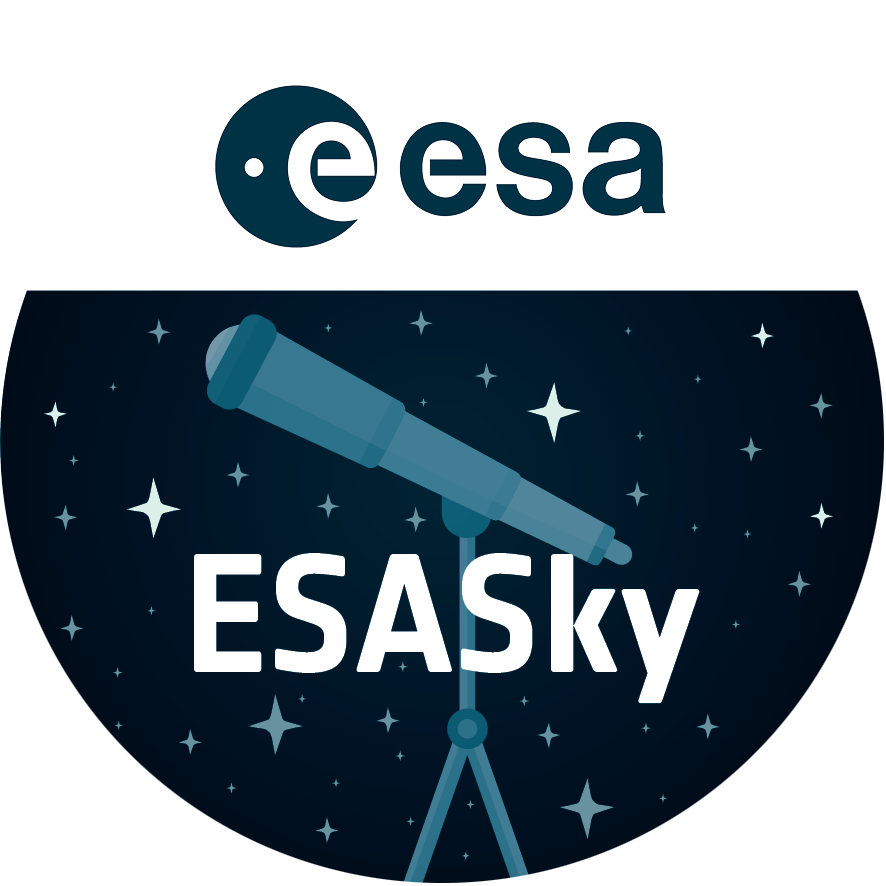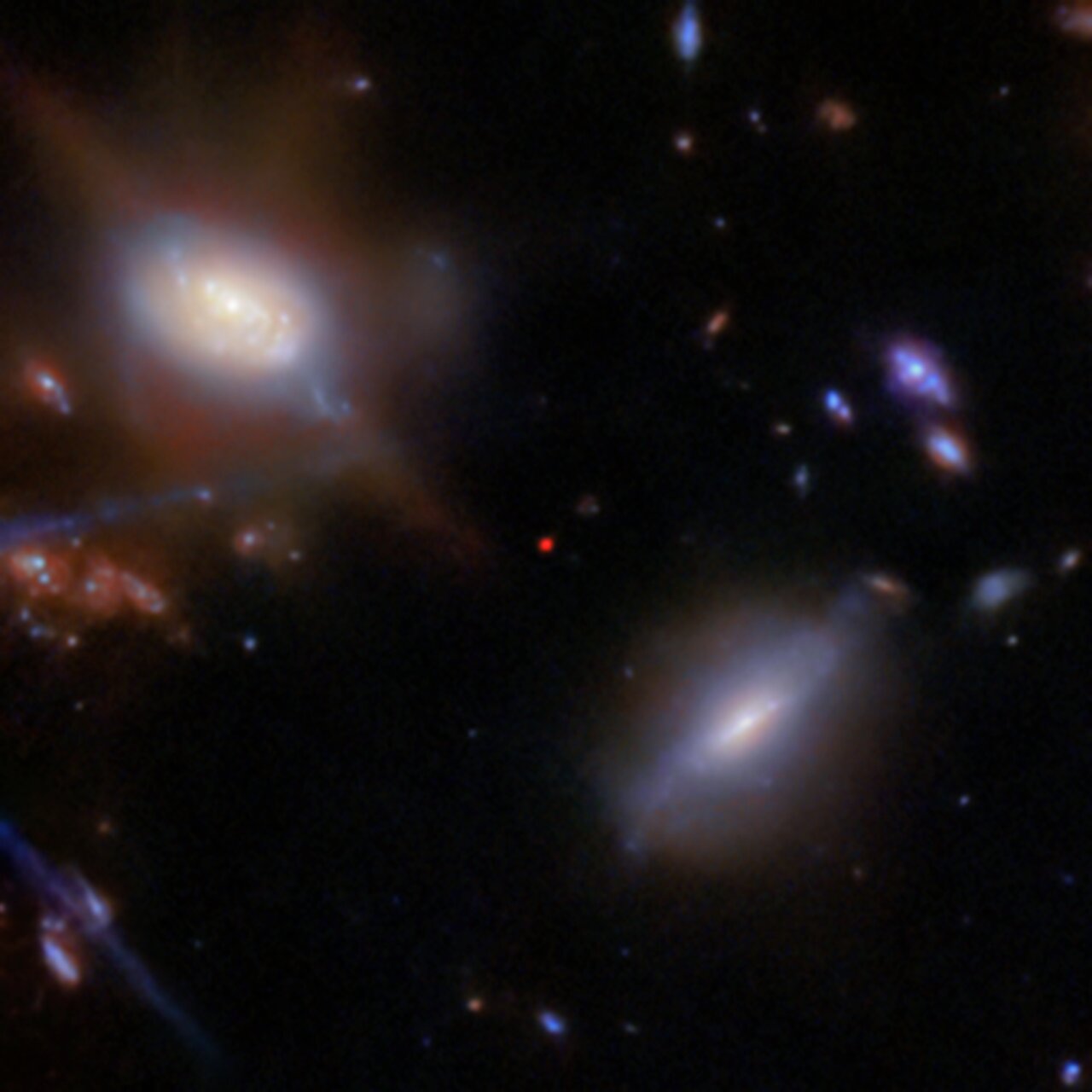About the Object
Coordinates
| Position (RA): | 3 32 15.57 |
|---|---|
| Position (Dec): | -27° 53' 23.29" |
| Field of view: | 0.17 x 0.17 arcminutes |
| Orientation: | North is 37.9° right of vertical |
Colours & filters
| Band | Wavelength | Telescope |
|---|---|---|
| Optical | 900 nm | James Webb Space Telescope NIRCam |
| Infrared | 1.15 μm | James Webb Space Telescope NIRCam |
| Infrared | 1.5 μm | James Webb Space Telescope NIRCam |
| Infrared | 2.0 μm | James Webb Space Telescope NIRCam |
| Infrared | 2.77 μm | James Webb Space Telescope NIRCam |
| Infrared | 3.56 μm | James Webb Space Telescope NIRCam |
| Infrared | 4.1 μm | James Webb Space Telescope NIRCam |
| Infrared | 4.44 μm | James Webb Space Telescope NIRCam |
JADES-GS-z13-1 (NIRCam close-up)
The incredibly distant galaxy GS-z13-1, observed just 330 million years after the Big Bang, was initially discovered with deep imaging from the NASA/ESA/CSA James Webb Space Telescope. Now, an international team of astronomers has definitively identified powerful hydrogen emission from this galaxy at an unexpectedly early period in the Universe’s history, a probable sign that we are seeing some of the first hot stars from the dawn of the Universe.
This image shows the galaxy GS-z13-1 (the red dot at centre), imaged with Webb’s Near-Infrared Camera (NIRCam) as part of the JWST Advanced Deep Extragalactic Survey (JADES) programme. These data from NIRCam allowed researchers to identify GS-z13-1 as an incredibly distant galaxy, and to put an estimate on its redshift value. Webb’s unique infrared sensitivity is necessary to observe galaxies at this extreme distance, whose light has been redshifted into infrared wavelengths during its long journey across the cosmos.
To confirm the galaxy’s redshift, the team turned to Webb’s Near-Infrared Spectrograph (NIRSpec) instrument. With new observations permitting advanced spectroscopy of the galaxy’s emitted light, the team not only confirmed GS-z13-1’s redshift of 13.0, they also revealed the strong presence of a type of ultraviolet radiation called Lyman-α emission. This is a telltale sign of the presence of newly forming stars, or a possible active galactic nucleus in the galaxy, but at a much earlier time than astronomers had thought possible. The result holds great implications for our understanding of the Universe.
[Image description: A small, zoomed-in area of deep space. Numerous galaxies in various shapes are visible, most of them small, but two are quite large and glow brightly. In the very centre is a small red dot, an extremely faraway galaxy. Two lines of light enter the left side: these are diffraction spikes, visual artefacts, caused by a nearby bright star just out of view.]
Credit:ESA/Webb, NASA, STScI, CSA, JADES Collaboration, Brant Robertson (UC Santa Cruz), Ben Johnson (CfA), Sandro Tacchella (Cambridge), Phill Cargile (CfA), J. Witstok, P. Jakobsen, A. Pagan (STScI), M. Zamani (ESA/Webb)
About the Image
| Id: | weic2505b | |
|---|---|---|
| Type: | Observation | |
| Release date: | 26 March 2025, 17:00 | |
| Related releases: | weic2505 | |
| Size: | 4000 x 4000 px | |




